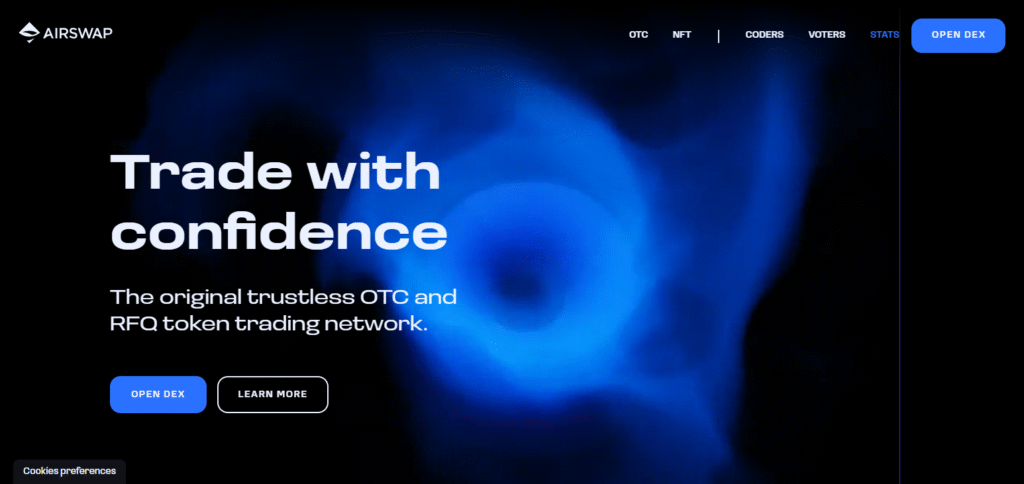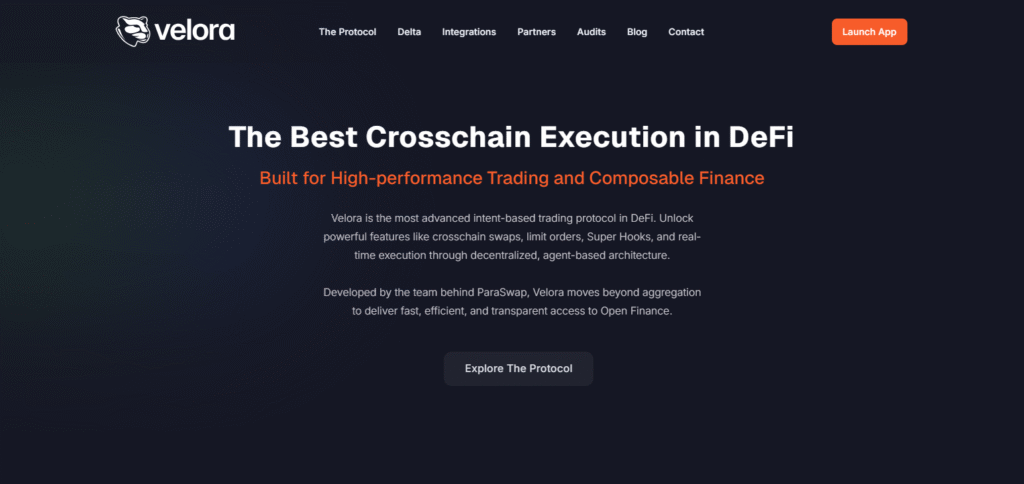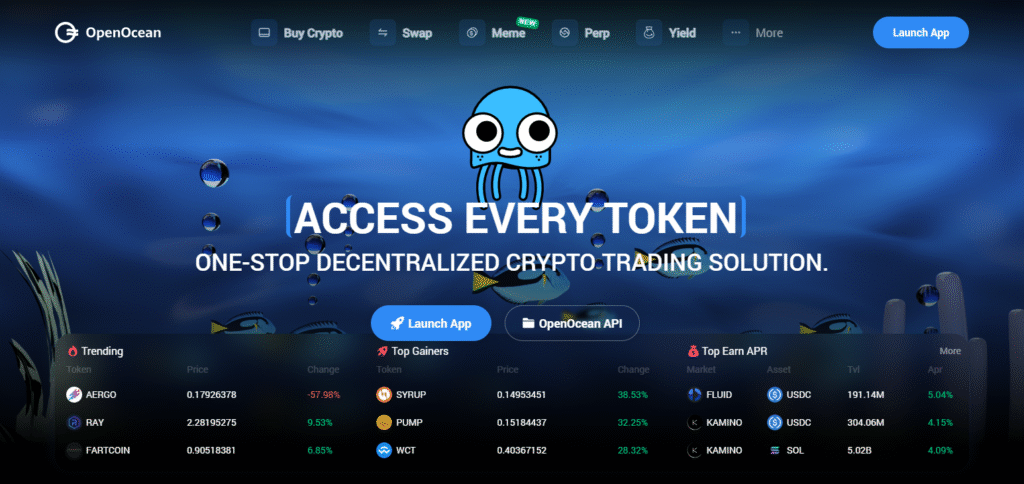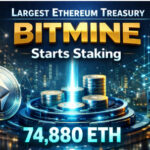This article will cover DeFi aggregator platforms which facilitate interaction with various services within decentralized finance.
These platforms aggregate multiple DeFi protocols, enabling users to easily check prices, reduce costs, and obtain different financial services from one place.
By optimizing transactions, DeFi aggregators improve the user experience, making access to decentralized finance easier and more efficient.
What Is a DeFi Aggregator?
DeFi refers to the emerging class of financial applications that are being developed using blockchain technology, and is a modification of Decentralized Finance. It is part of a wider movement in decentralization which fosters clear, open-access non-custodial global financial products.
It is well-known that decentralized finance is operated throughout multiple blockchains such as Ethereum and Binance Smart Chain, with each containing its own closed system of financial protocols.
Each of these individual protocols provide excellent returns on lending crypto, but the challenge within DeFi is getting the best rates for swapping, selling, and trading crypto when financial data is split across multiple protocols.
Defi Aggregator Platforms Explained
In simplistic terms, a DeFi aggregator is a platform that collects numerous services of decentralized finance (DeFi) like trading, lending, borrowing, yield farming into a single intuitive interface in order to make it easier for the users. Instead of accessing several platforms through different DeFi protocols, users can engage with several platforms at one place.
By collecting data from different DeFi protocols, users are able to evaluate interest rates, yields, and other chances to maximize returns.
These platforms ensure that with every trade or lending of assets, the costs to consumers are minimized or the greatest benefits are obtained which help in optimization of transactions using smart algorithms.
Aggregators make all of this faster for the clients who would otherwise be made to waste loads of time finding the optimal and most efficient DeFi options for themselves which saves them a lot of resources.
Moreover, these platforms permit users to execute over protocol transactions in a single action, thus improving efficiency by lowering gas expenses, lowering other costs, and reducing complexity.
This allows users, particularly novices, to easily participate in DeFi without the need to familiarize themselves with every detail of each platform individually. In short, DeFi aggregators simplify access to the decentralized financial ecosystem.
How DeFi Aggregators Work?
To help users evaluate interest rates, liquidity, and available services from different platforms, DeFi Aggregator connects to many decentralized finance platforms.
These Aggregators also check decentralized exchanges and lending and farming protocols to check if they offer yield farming services.
These Aggregators help the user, by gathering real-time data accross different DeFi platforms, to avoid trading, lending or in need of borrowing from numerous dashboard.
While supporting yield farming and staking, the Aggregators do the analysis in order to determine which protocols offer generous returns at remarkably low fuel expenses.
It is far easier for useers to just seek the help of the Aggregator who will do the legwork and provide the most optimal return.
This easy framework enables users to get the most profit, using the least amount of funds through transaction while effortless reducing manual work to manage multiple DeFi applications.
They are brought to better returns and results while using user-friendly interfaces. A broad range of audiences can benefit from low hanging fruits without having to build any additional tech savviness and concepts for defiance.
Top DeFi Aggregators Platforms In 2025
1. 1inch
1inch is a top Defi aggregator, sourcing liquidity from dozens of decentralized exchanges to provide users with the best possible trading prices. Its routing algorithm guarantees the best possible token swaps within different ecosystems of blockchains.
The 1inch platform supports a wide variety of tokens and has sophisticated trading options, which means it is user-friendly and accessible for new and experienced traders alike.

1inch is effective during trading. It is cost-efficient and enables low-slippage trading with gas-efficient transactions. It is easily integrated with wallets and more which improves convenience.
1inch is a one-stop shop for token swappers and Defi explorers by being everything a user would need and more in the same interface.
2. AirSwap
Alongside being a platform with streamlined user experience, Air Swap enables efficient cross-chain trading. Its protocol is decentralized, whereby it directly pairs buyers and sellers for off-chain negotiations.

Users that prefer the safety and simplicity AirSwap offers when it comes to bypassing transactional hassles such as slippage and counterparty risk can build on its compliance with various blockchain networks.
New users to the platform will find the user interface non-disorienting, as it has been designed for easy navigation. Developers and DeFi users alike differentiate AirSwap trading options from competitors by its gasless trading feature, further improving payment efficiency.
3. ParaSwap
Using liquidity from major decentralized exchanges, ParaSwap provides rapid and effective token swaps. Its sophisticated trade execution algorithm fetches deals from all available pools to harvest the best rates.

With a reputation of low fees and high level of dependability, Xi also works with Ethereum, BNB Chain, and Polygon. While supporting individuals, specialized traders’ institutions are provided with advanced API tools for custom integrations.
By prioritizing equity and efficiency, ParaSwap offers a seamless experience in DeFi. Its design is simplistic yet its speed in conducting transactions puts it a step ahead of other platforms which makes it useful for people new to trading and even experts in the DeFi space.
4. WardenSwap
WardenSwap is a layer two aggregator on Binance Smart Chain which aims at simplifying token swaps by providing fast and inexpensive trades. It sources liquidity from all over BSC to offer users the best rates possible and utilizes BSC’s liquidity for it’s automated marketing creation price mechanisms.

Because of the many cheaper routes and varied routes A and B intersect. WardenSwap’s systems are geared to handle execution looses and multi-homing edges, so users do not overpay comparatively in gas fees.
With its more specific thematic focus, it appeals to a wider audience of traders. The intuitive user interface is definitely a plus and developers looking to make a WardenSwap clone with streaming metrics systems can make better decisions. It works for those looking for ‘informative and practical’ orientation in the market.
5. OpenOcean
OpenOcean is everything DeFi and CeFi in one place: an all-encompassing aggregator. This platform exchanges tokens cross-chain with an algorithm that guarantees optimal token rates for users; they get the most out of every swap.

Encompassing chains like Solana, Avalanche, Ethereum, and BNB Chain, OpenOcean is readily available across major blockchains. With limit orders and arbitrage opportunities available, the platform is suited for advanced traders.
Users benefit from low fees and slippage. Further, improved user experience with no effort wallet plug in makes OpenOcean ideal for anyone looking for speed, granularity, and superior results in both decentralized and centralized setups.
Benefits of Using a DeFi Aggregator
The time, effort, and resources an individual spends in managing decentralized financial activities is greatly reduced when using a DeFi aggregator.
One such example of an advantage is time efficiency as aggregators already do all the work analyzing different DeFi protocols which include checking their rates, fees, and ROI so users do not have to navigate from one platform to another.
This automation will most certainly be beneficial to all active traders, stakers, and yield farmers who are always on the go.
Employers strive to meet productivity expectations with limited resources. This meant that lower cost with better value ratios results in maximized time and cost efficiency.
By employing these strategies, aggregators guarantee better rates both with lower fees on trades. Aggregrators automate gas expense optimization which guarantees lower transaction expenses. Other cost restrictions for value also improve net income.
Finally, DeFi aggregators provide all services within a single platform whether it be for trading, stakes, loans, or liquidity enhancements. Reduced reliance on various wallets and platforms leads to higher simplification thus making DeFi easier to manage while boosting accessibility for novel users.
Risks and Considerations
DeFi aggregators provide better rates while also enhancing convenience, but they also come with additional risks. Perhaps the biggest risk faced is that of smart contract exposure—users may be at risk of losing funds if there is an error in the code or security breach in the aggregators’ code.
In addition, reliability of the platform is important; downtime or any technological complications can stall or interfere with transactions. Changes in liquidity across protocols might also incur unanticipated slippage or unsuccessful deals.
Finally, the uncertainty of regulations around DeFi services does have to be looked at as it may limit the access a user has in some regions. It is essential to conduct in-depth research on the platforms and use credible aggregators with strict security policies.
Conclusion
In summary, DeFi aggregator platforms deconstruct the sophisticated world of decentralized finance (DeFi) by merging multiple services into one platform.
They offer users value by saving time and costs as well as finding optimal rates, improving accessibility for novices and advanced traders alike.
With an array of algorithms and connections to a multitude of protocols, these platforms facilitate the seamless and safe navigation through the pathways of DeFi.









